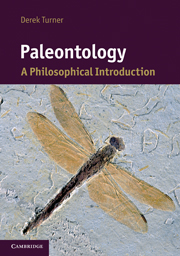Book contents
- Frontmatter
- Contents
- List of figures
- Acknowledgments
- 1 Introduction
- 2 A new way of seeing the fossil record
- 3 Punctuated equilibrium
- 4 Species and macroevolution
- 5 The case for species selection
- 6 Real trends, relative progress
- 7 Dynamics of evolutionary trends
- 8 Evolutionary contingency
- 9 Diversity, disparity, and the Burgess Shale
- 10 Molecular fossils
- Bibliography
- Index
4 - Species and macroevolution
Published online by Cambridge University Press: 05 June 2012
- Frontmatter
- Contents
- List of figures
- Acknowledgments
- 1 Introduction
- 2 A new way of seeing the fossil record
- 3 Punctuated equilibrium
- 4 Species and macroevolution
- 5 The case for species selection
- 6 Real trends, relative progress
- 7 Dynamics of evolutionary trends
- 8 Evolutionary contingency
- 9 Diversity, disparity, and the Burgess Shale
- 10 Molecular fossils
- Bibliography
- Index
Summary
“Macroevolution is decoupled from microevolution”
– Steven Stanley (1975, p. 648)Should scientists go beyond minimalist models to embrace a hierarchical way of thinking about evolution? Are there any large-scale patterns or trends in evolutionary history that are not simply by-products or after-effects of smallerscale microevolutionary processes? Does evolutionary theory need to include any macro-level mechanisms above and beyond the familiar forces of selection, mutation, and drift?
So far, the case for a hierarchical evolutionary theory might seem pretty solid. To begin with, we have seen that differential extinction and differential speciation can, in theory at least, give rise to cladogenetic trends even if there is no evolutionary change going on within species at all. At the same time, the theory of PE suggests that most species, most of the time, do not experience any cumulative directional evolutionary change. If that is correct (and the empirical evidence does not seem too bad), then it points toward the conclusion that most large-scale evolutionary trends are due to differential speciation and extinction – or to species sorting. In this chapter, we'll explore this idea in more detail: Can species sorting serve as the basis for developing an interesting macroevolutionary theory? Some paleontologists, especially Stanley (1975; 1979) and Gould, have answered that question in the affirmative. Many other biologists and philosophers are more skeptical. Let's begin by considering just one reason for skepticism.
- Type
- Chapter
- Information
- PaleontologyA Philosophical Introduction, pp. 58 - 76Publisher: Cambridge University PressPrint publication year: 2011



